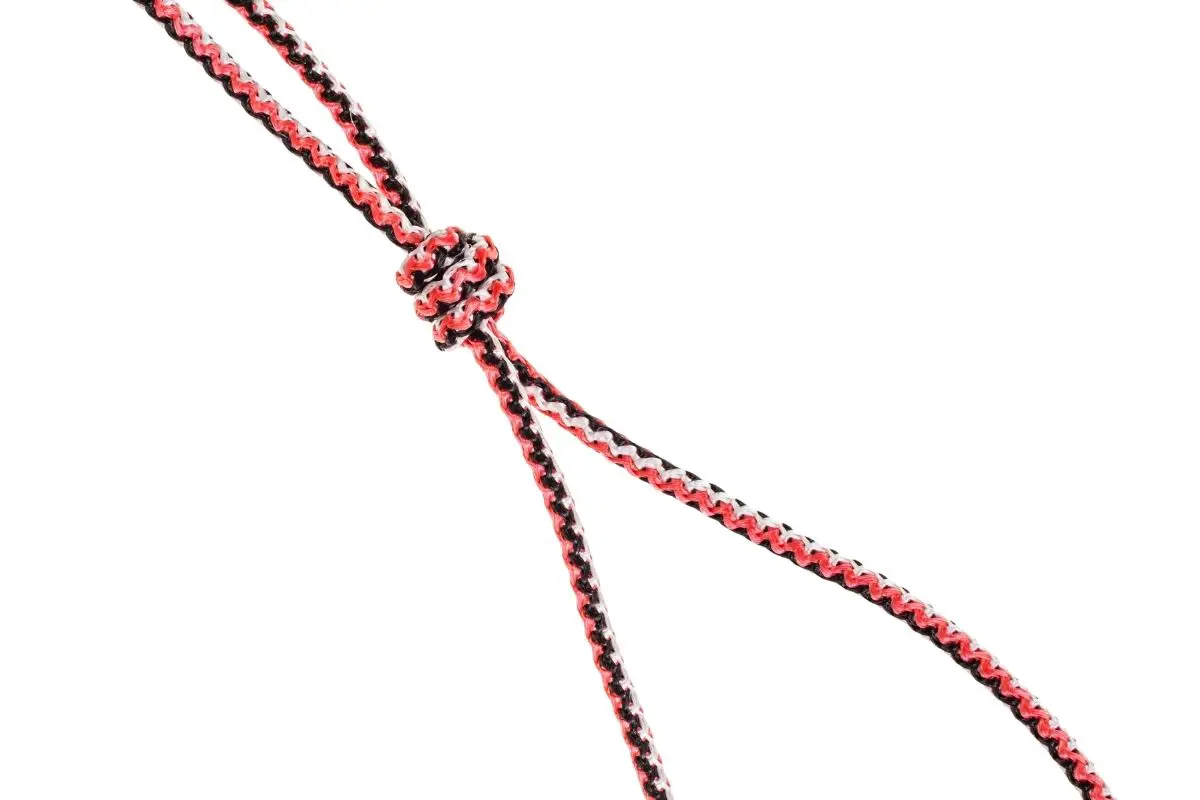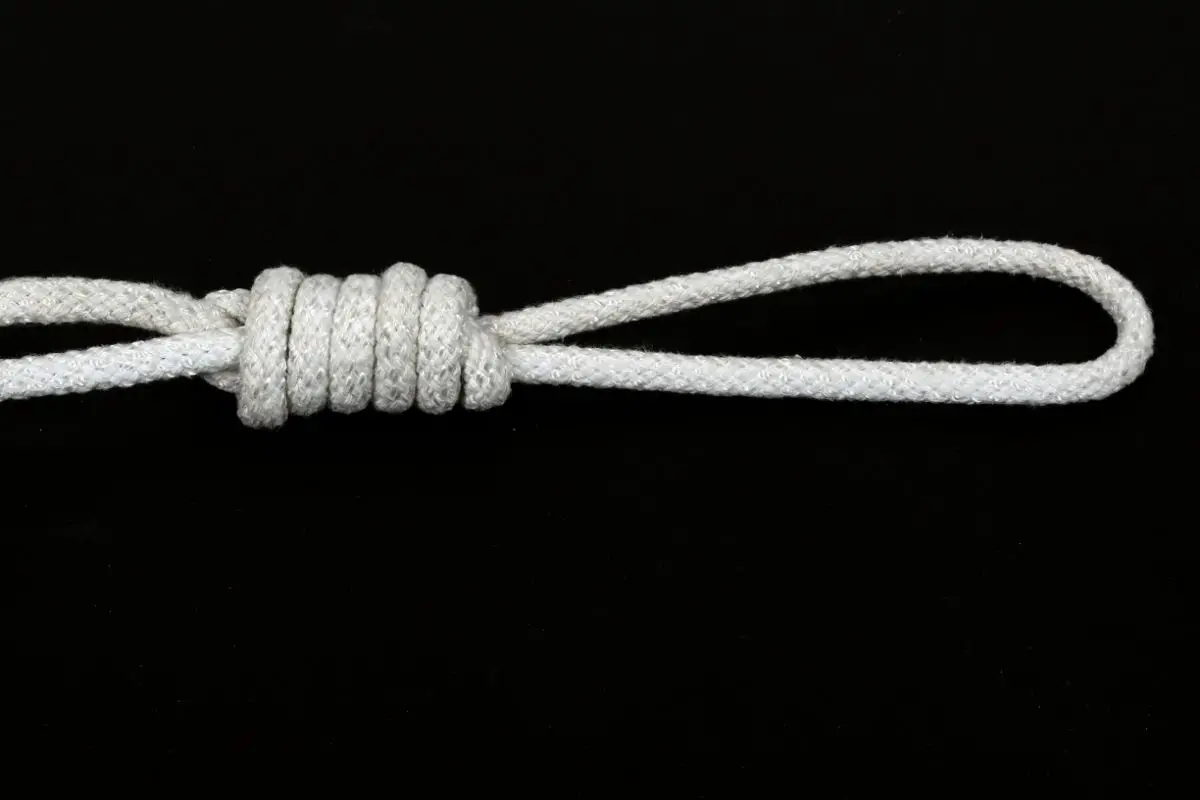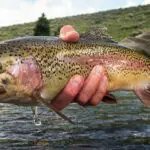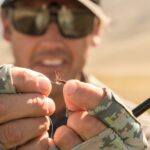If you think that giving your fly or your lure a little more motion or action will work to attract fish, we recommend that you work to master the non-slip loop knot (which is also occasionally known as the Kreh knot, the non-slip mono knot, and the non-slip mono knot).

This kind of knot won’t actually grip the lure or fly, allowing the whole system to be more flexible, and allowing a higher degree of natural movement in the water (which will entice more fish!).
The non-slip loop knot is one of the most useful knots in fishing because it allows you to tie a loop on any line without having to worry about slipping.
It’s so easy to use that even beginners can master this knot quickly. In fact, tying a non slip loop knot is nearly as easy as tying a regular overhand knot!
Our Step-By-Step Guide To Tying A Non-Slip Loop Knot
Step One: Tie a regular overhand knot into your fishing line, around 10 inches from the line’s end.
Step Two: Pass the knot through the eye of your hook, and then wrap the line’s tag end around the knot’s standing part at least four or five times (so that it is thoroughly secured).
Once you have done this, you can bring the overhand knot through from the same side that you have exited from.
Step Three: Wet your knot, so that it is strengthened, and then slowly pull the line’s tag end, so that the knot’s wraps will hold fast.
Step Four: Pull the standing fishing line and the loop knot in two opposite directions. This will tighten the loop, and complete the know, Trip the tag end to neaten up and finalize your knot.
You can find video tutorials to guide you through the process of tying a non-slip loop knot visually, if that is the way that you prefer to learn.
All About The Non-Slip Loop Knot
Similar Knots To The Non-Slip Loop Knots
There are many types of loops that you can create with a non slip loop knot, but here are some of the most common ones:
Non Slip Loop Knot – The non slip loop knot is used for making loops on lines that don’t need to be tied very tightly.
This type of knot is commonly used for lures, flies, and other kinds of fishing equipment that doesn’t require a lot of strength.
Mono Knot – A mono knot is a single strand knot that is used for attaching things together. For example, a mono knot may be used to attach an anchor rope to another piece of rope.
You can make a mono knot by first tying a regular overhand or underhand knot.
Then, pass the working end of the line through the eye of the hook, and then back through the same hole again.
Repeat this step until you’ve made enough mono knots to secure the desired length of line.
Kreh Knot – A kreh knot is similar to a mono knot, except that it has three strands instead of just one. Like a mono knot, a kreh knot is used for attaching things.
However, unlike a mono knot, a Kreh knot is used to connect two pieces of material together.
To tie a kreh knot, follow the steps listed above, but when you reach the point where you would normally finish off the knot, leave a third strand hanging out of the knot.
Now, take the working end of the string and wind it around the remaining strand multiple times. When you’re finished, cut the extra strand off, and trim away any excess.
Figure 8 Knot – A figure eight knot is a great knot for tying a loop onto a line. Unlike a mono knot, which only uses one strand of line, a figure eight knot uses all the line’s strands.
To tie a figure eight knot, start by passing the line’s tag end through the eye of the fishing hook, and then wrapping the line’s tag end several times around itself.
Next, bring the overhand knot back through the eye of the fly hook, and then repeat these steps until the entire line is wrapped around the hook.
Finally, trim away any excess line, and then tuck the tag end into the knot.
Origins Of The Non-Slip Loop Knot
This knot was designed by Lefty Kreh, as a strengthened version of the old-fashioned square knot.
It was originally called the “Looped Square Knot”, and later became known simply as the non-slip loop knot.
The name “non slip” comes from the fact that the knot does not slide down the line when tension is applied.
In addition, because the knot is made using four wraps of line, it will never loosen up.
The Purpose Of The Non -Slip Loop Knot
Typically, anglers will use the non-slip loop knot to attach a line to a fly or a lure. This is because it is the strongest and best type of knot for catching fish.
Our Top Tips For Tying A Non-Slip Loop Knot

- We recommend that you adjust the size of the loop whilst you are making the wraps around the standing component of the fishing line whilst it is still loose.
Once the slip loop knot has been tightened, you will nor be able to adjust the knot, and will have to start the knot all over again.
- The number of wraps that will be necessary in your knot will be dependent on the thickness of your fishing line.
If it is the kind of line suitable to withstand 6 to 8 pounds of force, you should make at least seven wraps around the standing part.
If your line is stronger, you will need fewer wraps – for example, if it can withstand a weight of 60 pounds, you will only need a couple of wraps to secure the knot.
Comparing The Non-Slip Loop Knot And The Perfection Loop
The perfection loop knot and the non slip loop knot are very similar knots. They both require four wraps of line, and they both tighten under tension.
However, there are some key differences between them. For starters, the non slip loop knot requires less time to tie than the perfection loop knot.
Secondly, the non-slip loop is much easier to untie than the perfection loop. Thirdly, the non-slip loop will not come undone if you accidentally pull on the line.
Lastly, the non-slip loop cannot be tied with a single wrap of line.
Final Thoughts
In conclusion, we think that the non slip loop knot is an excellent knot to learn how to tie. It is easy to tie, and is relatively quick to do so.
As well as being useful for attaching lines to hooks, lures and flies, this knot also works well for joining two pieces of rope together.
If you would like more information about other types of knots, please check out our other articles.
- Do You Need An Indicator For Nymph Fishing? - November 16, 2023
- Fishing Safety Tips For Families - September 25, 2023
- What Is The Best Time To Night Fish At A Lake? - September 18, 2023


![How To Tie A Fishing Hook To A Line? [Quickly And Easily] How To Tie A Fishing Hook To A Line? [Quickly And Easily]](https://irvinelake.net/wp-content/uploads/2022/04/How-To-Tie-A-Fishing-Hook-To-A-Line-Quickly-And-Easily-150x150.jpg)
![Fly Fishing for Beginners [Ultimate Guide to Catching Fish] fly fishing for beginners](https://irvinelake.net/wp-content/uploads/2022/11/fly-fishing-man-150x150.png)





![Types of Fishing Rods [A Guide For Beginners] types of fishing rods](https://irvinelake.net/wp-content/uploads/2022/10/types-of-fishing-rods-1-150x150.png)
